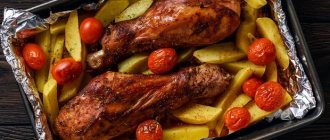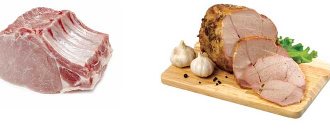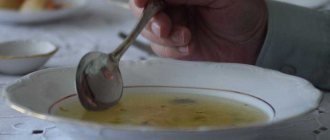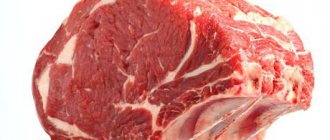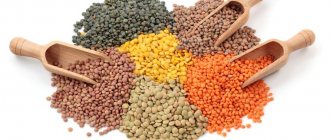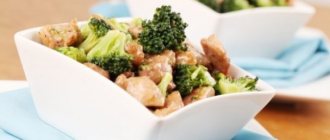How many calories are in turkey
The benefits of turkey for the body are due to its beneficial effect on the digestive system, the absence of the likelihood of allergies, the ability to maintain strength for a long time and at the same time not burden the stomach and intestines. Therefore, the product is recommended for use during recovery from many pathologies.
Poultry contains a minimum of carbohydrates and cholesterol. Even when preparing dishes from the fattest parts, you should not worry about your figure.
The product is recommended for athletes and those who want to emphasize muscle definition. The nutritional value of different parts of meat differs slightly. The calorie content of breast per 100 g is less than 90 kcal. This part is considered the most dietary. The values are slightly higher in the bird’s drumstick and thigh (~ 130 kcal). The most fat is found in the legs, wings and skin. In the latter case, the value is about 390 kcal.
Soup boiler
When preparing a turkey first course, you should also adhere to the following recommendations:
- The carcass must be completely submerged and covered with water. It is allowed to add boiling water already during the cooking process.
- If foam forms, it must be removed. Otherwise the broth will turn out cloudy.
- Sometimes the water is drained immediately after boiling and fresh water is added. Many people consider this method of preparation to be the most convenient, since with it you don’t have to worry about the foam that forms on the surface of the broth.
- Very often a small head of onion is added to the broth. This way the liquid turns out aromatic and pleasant to the taste. The onion is subsequently removed.
- Before immersing the meat in water, it is carefully examined and washed under running water.
- After the end of cooking, do not turn off the broth, but allow it to brew for some more time.
- As a rule, at the beginning of cooking, turn the pan on at full power and only then reduce the heat.
How long does it take to cook turkey for soup? Usually the whole process takes no more than one hour. Sometimes it can take up to an hour and a half. You can determine the finished product by piercing it with a knife. The color of cooked poultry should be as light as possible. It is quite elastic and slightly fibrous. A pink tint indicates that the piece is not cooked enough.
Turkey fried, boiled, baked
The energy value may vary depending on what kind of meat is chosen (red or white), as well as on the method of heat treatment. This should be taken into account when dieting. Boiled turkey fillet has the lowest calorie content - about 130 kcal, and steamed turkey fillet - only 90 kcal. Stewing and baking are also the best ways to prepare meat when creating a healthy diet (120 and 160 kcal, respectively).
Fried turkey with a calorie content of 165 kcal can be included in the menu when losing weight, but in small quantities.
Nutritionists advise making poultry cutlets, quenelles and zraza, since the value of the finished dish does not exceed 150 kcal. White poultry meat without skin is an excellent source of energy for active people: digestion slows down and the feeling of fullness remains for a long time. Compare with from our publication.
Cooked meat
Turkey usually takes at least two hours to cook, but it all depends on the thickness of the meat. For example, a whole carcass will take at least three hours to cook, while small pieces can be cooked in forty-five minutes. As for stewing in a pressure cooker, this method is considered the most optimal, as it allows you to significantly reduce the time. Usually the timer is set for forty minutes in the “Cooking” mode.
Calorie content of minced meat, liver and broth
Of all turkey by-products, poultry liver has the highest calorie content - about 276 kcal. If we consider the minced meat indicator, then when using fillet the calorie content will be insignificant - no more than 200 kcal. It is best to choose for further grinding only fresh meat with a pleasant smell, pink color and strong structure.
The calorie content of turkey broth is only 30 kcal, so you can safely prepare soups based on it while on a diet. At the same time, the product contains a large amount of protein. For cooking, it is recommended to use wings, but not entirely, but only some of them, so that the dish is not heavy.
Calorie table per 100 grams
A detailed table of caloric content per 100 g will help you determine with maximum accuracy what the nutritional value of different parts of poultry meat is when drawing up a dietary menu.
The possibility of frequent consumption of the product in question is due to its low fat content. The good digestibility of poultry meat, nutritional value and pleasant taste make it indispensable for weight loss.
Turkey meat has traditionally been used in Western cuisine. Today, turkey meat is popular in the cuisines of all nations of the world. It is a high-quality complete protein and contains a low amount of animal fat. In addition, the low calorie content of turkey allows it to be included in the daily menu of people watching their own body weight.
Turkey fillet: calorie content and beneficial properties
One hundred grams of turkey meat contains 19.2 g of protein and 0.7 g of fat. In turkey breast, the calorie content is 84 kcal per 100 g, and in turkey fillet, the calorie content is 194 kcal per 100 g. This composition allows turkey meat to be used in the diet of people who have suffered serious illnesses, as well as those who lead an active lifestyle. In addition, turkey has a balanced composition of vitamins and microelements. In particular, it is rich in B vitamins and contains the daily amount of vitamin PP in one medium serving.
In terms of the amount of phosphorus, turkey is comparable to fish, and iron from its meat is perfectly absorbed. The selenium contained in turkey is necessary for the human body to maintain youth and prevent cancer, and magnesium is required for the normal functioning of the nervous system.
Basic Rules
In order for the dish to be as tasty and healthy as possible, you should consider some rules.
- The meat must be cut across the grain. These rules apply to all types of this product. Otherwise, you can end up with an extremely tough dish that will simply be unpleasant to eat.
- To cook the turkey, place it in cold water. However, in some cases it can be immersed in boiling water.
- It is recommended to remove fatty areas on the surface of the carcass before starting work. The skin is removed in the same way. If the turkey is cooked for jellied meat, it is advisable to leave the fat.
- If soup is being prepared, the meat should be placed exclusively in cold and clean water.
As for salt, this meat can be salted both at the end of cooking and at the very beginning. However, it should be borne in mind that salt interferes with the transfer of vitamins and microelements into the liquid. Therefore, if you are cooking soup, it is advisable to salt it at the end, before turning off the pan.
Dietary turkey dishes. Calories
In dietary nutrition, turkey dishes are extremely highly valued due to the lack of cholesterol in them. Dietary turkey dishes are indispensable for athletes and those losing weight, as they allow you to build muscle mass without adding extra centimeters to your waist.
To reduce the already low calorie content of turkey, it is necessary to remove the skin from it before cooking, since fat is located in the subcutaneous layers. Among other things, turkey meat contains serotonin, which is necessary in the fight against extra pounds. Turkey meat has a pleasant taste and does not require complex cooking.
For example, to prepare turkey fillet with a vegetable side dish, the poultry flesh will need to be cut into small pieces. Cut carrots, onions, bell peppers and mushrooms into cubes, place in a baking dish on top of the turkey flesh, cover with foil and bake in the oven until tender, after adding salt and pepper. Generously decorate the finished dish with chopped herbs. If desired, you can serve it with rice or use it on its own.
A wonderful low-calorie turkey dish is roasted thigh with marjoram. The turkey thigh is washed, dried and fried in olive oil in a preheated frying pan on both sides for several minutes.
The fried leg is transferred to a baking dish, poured with oil from the frying pan and baked in the oven until half cooked. Then sliced onions, potatoes and apples are added to the turkey. The whole thing is seasoned with thyme, salted, poured with a small amount of dry white wine and baked until fully cooked.
Low-calorie turkey is used in Roman stew. The turkey flesh is cut into cubes and fried in olive oil. Then add chopped mushrooms, tomato paste and season with sage. After a few minutes, add cream, dry white wine and a little flour. Served with pasta.
A tasty and healthy dish is turkey fillet with beans in pots. Pre-soaked red beans are boiled. Turkey fillet is cut into small pieces and fried in olive oil with chopped vegetables: onions, carrots and garlic. Season with marjoram. A little dry white wine is poured into each portioned pot, a layer of beans is laid out, and then a layer of meat with vegetables, salted, covered with a “lid” made from store-bought puff pastry and baked in the oven until cooked.
Low-calorie turkey (breast) is also hypoallergenic, therefore it is widely used in children's nutrition.
Turkey is most loved in America and Europe, and its popularity is not only due to its delicate taste, but also its nutritional value. In addition, this is the bird served on Thanksgiving Day. Poultry meat is considered dietary and has a glycemic index of “0”. In addition, it rarely causes allergic reactions.
What to cook
You can prepare a lot of dietary and children's dishes from boiled turkey. For example, steamed meatballs and cutlets are very tasty. In addition, this meat can make an excellent casserole. It is prepared quite simply. First, mashed potatoes or pumpkin are cooked. Next, the boiled turkey meat is passed through a meat grinder, lightly seasoned with salt and pepper. In a special form, place a layer of vegetable puree, a layer of chopped turkey and again a layer of vegetable puree. The casserole dish is placed in the oven. The top of the dish can be greased with sour cream.
In addition, boiled turkey breast can be cut into a salad of fresh vegetables with mayonnaise. The dietary soup made from this meat is very tasty. After the broth is cooked, the turkey is removed, and finely chopped potatoes, carrots and onions are added to the liquid. When the vegetables are ready, add two tablespoons of semolina, salt, bay leaf and peppercorns. The turkey is cut into small slices and put back into the soup. At the end of cooking, add dry or fresh herbs.
Composition and nutritional value
Turkey contains a large amount of protein. At the same time, it is low in cholesterol and fat and completely free of carbohydrates. Poultry meat is a source of minerals (phosphorus, iron, selenium), vitamins B1-B6, B9, B12, A, E, D, C, PP. The BJU of a whole bird, calculated per 100 grams of product, is 20.46/5.87/1.56 g. The figures differ in different zones.
Components:
Legs - 15.7/8.9/0, g Boiled - 25.3/10.4/0.0 g Breast - 19.2/0.7/0.0 g Minced meat - 20.0/8.0 /0.5 g. Skin - 12.7/36.9/0.0 g. Wings - 16.5/11.4/0.0 g. Legs - 18.4/6.4/0.0 g. .
By-products:
Stomachs - 20.0/7.0/0.0 g. Liver - 19.5/22.0/0.0 g. Heart - 16.0/5.1/0.4 g.
Cooking:
Boiled fillet - 25./1.0/0.0 g Baked turkey - 17.4/2.6/2.3 g. Stewed with vegetables - 3.3/1.1/8.7 g. Fillet in mustard sauce - 13.4/3.0/2.9 g. Turkey in the oven with tomatoes - 14.7/0.6/1.3 g. Fried - 28.0/6.0/0.0 g.
How many calories are in turkey
The average calorie content of a turkey is 276 kcal per 100 grams of product. But it has the fattest parts, so their calorie content is different. Let's look at some options.
Individual parts:
Legs - 142.0 Boiled - 195.0 kcal Breast - 84.0 Minced meat - 161.0 kcal. Leather - 387.0 units. Wings - 168.0 kcal. Ham - 131.0 units.
By-products:
Stomachs - 143.0 kcal. Liver - 276.0 kcal Heart - 128 units.
Dishes:
Boiled fillet - 130 kcal. Baked poultry - 103.0 kcal. Stewed with vegetables - 57.0 units. Poultry fillet in mustard sauce - 92.0 kcal. Poultry in the oven - 69.7 units. Fried - 165.0 kcal.
Why do many people prefer turkey meat over others and praise it? The answer is quite simple: the meat of this bird is distinguished by a high content of components necessary for the human body and is considered one of the most dietary. That is why experts in proper nutrition advise eating turkey more often than any other meat, because its calorie content is low, and there are no special difficulties with cooking.
Dietary properties of turkey
Turkey meat is considered not only one of the most dietary, but also one of the highest quality. Scientists have repeatedly proven that turkey meat is easily digestible in any form (fried, boiled or cooked in the oven). It contains almost no cholesterol, which is an advantage over other types of meat.
Turkey is considered dietary due to its relatively low calorie content; the meat of this bird is recommended for people with a sensitive stomach, for example, with gastritis or ulcers. In addition, it is actively used in children's diets.
However, you should not eat too much of it. Proper nutrition should consist of different foods and dishes.
Interesting to know: Turkey is rich in various components that the body needs. These include: calcium, phosphorus, potassium, iron, magnesium, etc.
The most popular turkey recipes
There are a large number of turkey recipes. The calorie content of the meat itself does not change much, but the complexity varies.
Turkey baked in foil (approximately 120 kcal/100 grams)
Most often, the turkey is baked whole, so it looks festive. In addition, this method significantly saves the housewife’s time, because baking it whole is much easier.
To make your baked turkey juicy you need:
- Marinate it. There are a lot of marinade options, but the fastest one is to put the carcass in a mixture of soy sauce, lemon juice, pepper, salt and garlic (chopped).
- After the meat has been marinated (it can sit for up to 12 hours), it must be filled with minced meat (usually apples and carrots, but other things can be added).
- You need to bake the turkey in foil. The first half hour at 250 degrees, and then lower to 180. It is noteworthy that the oven must be preheated.
Breast meat will also be easy to prepare. It will also be the lowest in calories.
Breast cooked in a slow cooker (approximately 98 kcal/100 grams)
To cook breasts in a slow cooker you will need:
Preparation:
- The fillet is prepared in the frying mode.
- First, onions and butter are added, after which the breast fillet pieces themselves are added.
- The breast with onions must be fried for 15-20 minutes, after which the remaining ingredients are added and mixed.
- Next, water is poured in and the dish is stewed for an hour (50-60 minutes).
Turkey cutlets (220 kcal/100 grams)
To prepare turkey cutlets you need:
- 400 g. Minced meat;
- 2 small onions;
- 2-3 pieces of loaf;
- 1 egg;
- Spices to taste.
Preparation:
- All ingredients are mixed.
- If the minced meat turns out to be liquid, then the bread does not need to be soaked.
- After this, the cutlets are formed (it is not necessary to roll them in flour) and fried and stewed.
In addition, you can make a sauce for the cutlets, for example, tomato or sour cream.
It is very useful to eat steamed cutlets made from minced turkey meat - they are suitable even for those who are forced to adhere to a therapeutic diet due to gastritis or ulcers. Moreover, turkey meat can be stewed or baked with dough. And most importantly, the product in question is excellent for making pates and stews. And this is an opportunity to feed both young children and the elderly tasty and healthy.
What can you cook
Turkey can be fried, stewed, baked or boiled. Moreover, the preparation of this meat for children and adults will be slightly different. For example, in order to cook a small piece for a child, you will need purified water, fillet, thigh or drumstick without skin. The meat is placed in cold water and boiled for half an hour. Next, the broth is completely drained and clean water is poured. After which the pan is kept on the stove for another sixty minutes.
Nutritional value of turkey meat and chemical composition
Turkey meat contains vitamins A and E, which are quite abundant. They are necessary for a person to function normally.
Turkey meat also contains protein, which is necessary to support metabolic processes and the normal functioning of systems and organs.
Important components contained in meat also include iron, potassium and calcium, which are involved in the process of hematopoiesis.
It is noteworthy that turkey meat contains a large amount of fat, but it is easily and quickly digested and improves the absorption of iron by cells.
The chemical composition of turkey contains essential amino acids, microelements and macroelements. Of the trace elements in turkey breast, copper, manganese, and selenium are noted; macroelements are represented by potassium, sodium phosphorus, and vitamins - niacin, retinol, choline, ascorbic and folic acids, riboflavin. These substances are indispensable for the functioning of the most important organs.
Harm of turkey meat and contraindications
You can find out how dietary turkey meat is in the following video:
Based on the above, we can conclude that turkey meat is one of the best dietary meat options. It is easily digestible and is suitable for people with various diseases. In addition, it is rich in various vitamins and amino acids, which are necessary for the functioning of organs and the good functioning of the body. However, you should not abuse it; you need to dilute your diet with different products.
For those who want to lose weight, the question of what to eat and what to give up is especially acute. If everything is more or less clear with products of plant origin, then you should be careful with products of animal origin during diets.
A good diet product is turkey. Its dietary meat contains almost no fat, so it does not threaten extra pounds. Turkey's low content, lack of carbohydrates and minimal cholesterol content make it an approved product not only during weight loss diets, but also during therapeutic diets. Turkey meat is easily digestible and does not cause allergic reactions, so it is recommended for pregnant and lactating women, as well as children, from infancy (as complementary foods).
Turkey harm
Doctors warn that too much protein harms people with kidney disease. In addition, patients suffering from chronic joint disease, which results in the formation of salt deposits, also risk deteriorating their health. In short, you should not go to extremes and eat too much turkey meat. Even a healthy person will not benefit from such nutrition.
